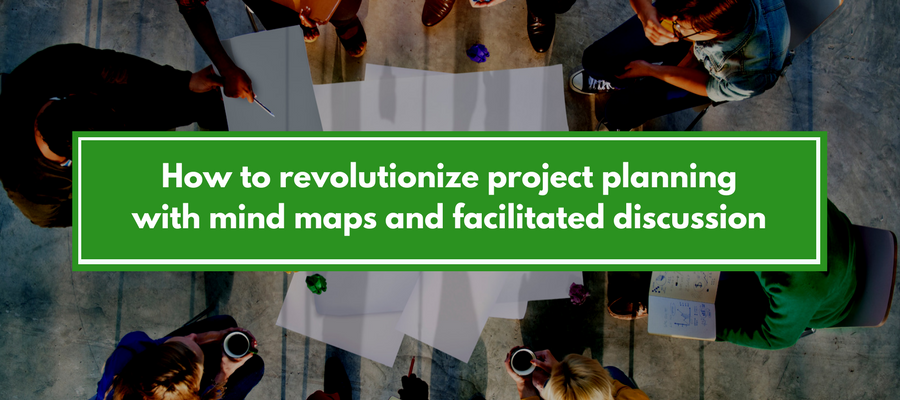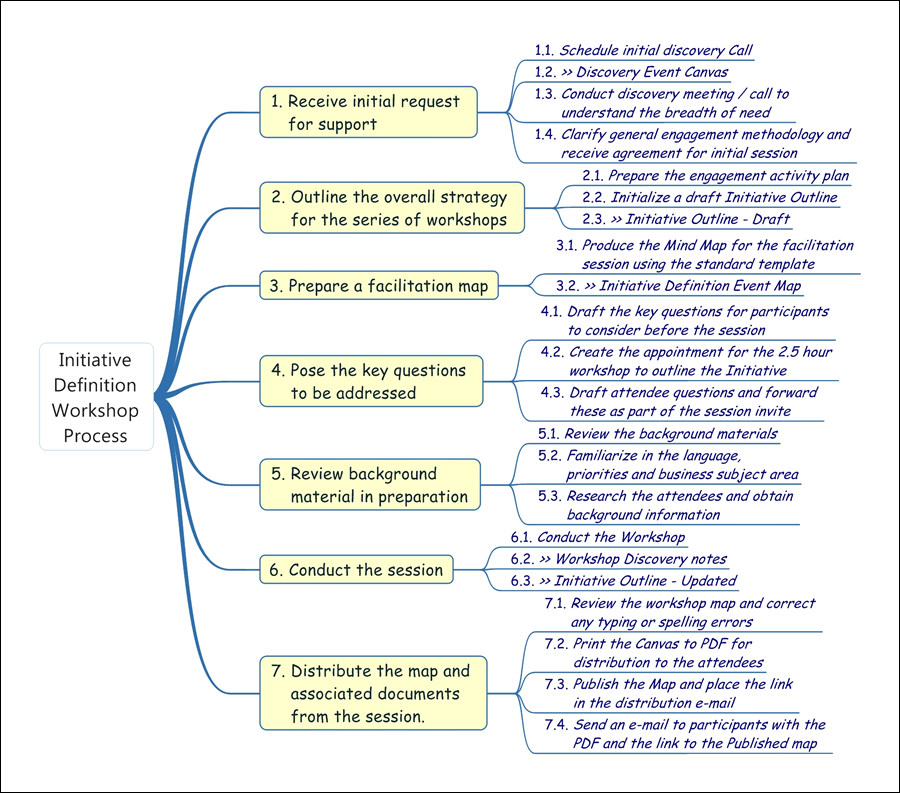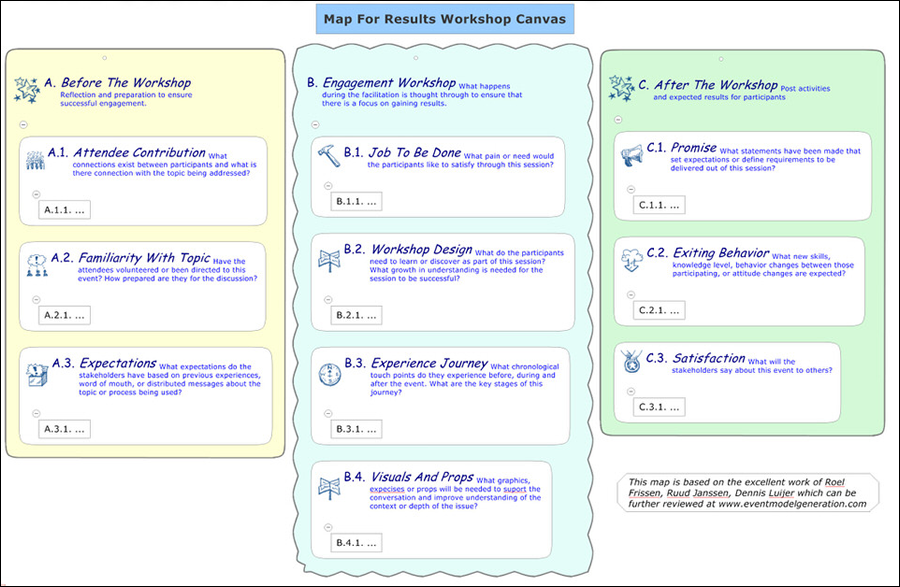Conventional approaches to project planning are usually time-consuming and inefficient in the use of the limited resources. Here’s how mind mapping software can help.
Project leaders are provided direct resources and access to business subject matter experts (SMEs) with the expectations of timely results being delivered to the client. With these resources, the leader has the collective knowledge, understandings, skills, and abilities often referred to as capabilities. The challenge is effectively tapping into those capabilities to effectively deliver the project objectives and timelines.
The conventional approach: Project planning is managed by a business analyst
The typical approach is to use a cycle of an interview, analyze, question, re-interview, elaborate, document, review, refine, approve, and then start development or re-engineering. Under this approach, the test is how quickly the business analyst can connect with, understand, document and confirm the business SME’s insights and prepare a conceptual business solution.
Once the solution is approved, each individual involved in the project must read the plan and try to establish a shared understanding of the concepts. Typically, clarity and accuracy is lost in translation.
A more effective project planning model: The engagement approach
Project leaders can utilize collaboration techniques to access these capabilities and ensure that they are shared amongst the team and SMEs. With the use of visual tools and facilitated discussions, it is quite possible to shorten the development cycles, reduce administrative overhead, and improve results by having group sessions where understandings of context, capturing of needs, identification of wants, and discovery of possible options can be realized in weeks not months.
When we use this collaborative approach, we develop a clearer understanding of what is the actual challenge or opportunity as well as viable solutions. This can be achieved more quickly than a single business analyst conducting weeks of interviews, analysis, and review work of report assets.
Visual facilitation enables the teams to capture and refine project requirements in real time for all attendees. All participants hear the topic and/or question to be addressed, hear the same emerging answers, have the opportunity to question perspectives, clarify expectations, and refine the language of the plan. This approach promotes shared understanding, as well as a clearer picture of each person’s role in the project.
All of this project data is captured in a visual one-page model that elegantly and concisely captures this shared understanding and can and be used to communicate with stakeholders. This puts the project team in an excellent position to focus all their efforts on the same challenge and its targeted solution.
Unpacking what must be done
During a series of articles I will present approaches that can be used to unpack the needs, project plan and the outcomes required, and will demonstrate how visual tools cane help power these facilitated planning sessions:
- Initiative Definition Workshop – define the need, strategy, resourcing, expectations, and objectives to address the need,
- Context and Value Proposition Workshop – clarify the parameters to be applied to the operational solution and the value proposition,
- Solution Definition Workshop – discover the solution that will meet the need, and
- Initiative Progress Meeting – monitor and report the project activities towards realizing the project goals.
Each of these sessions can be addressed using structured visual tools that produce a single-page summary of the findings, which can be efficiently verified and shared with others. This approach ultimately speeds up the timeframe from information discovery through project implementation..
Facilitating the conversation
To kick off this series of articles, let’s outline a common approach for the facilitated sessions which applies the following steps:
To define the facilitation we use the “Workshop Canvas” which articulates the considerations for the workshop and is used by the team to prepare and conduct the session. The model outlines the activities, key considerations, and approximate timings for the steps listed above. During this article series we will be utilizing a fictional project with the following characteristics:
To see an example of the Workshop Canvas, please use this link. (EDITOR’S NOTE: Rogers produced this canvas in MindManager. Watch for a blog post that explains, step-by-step, how to do it!)
The next installment of this series will outline the Initiative Definition Workshop and what is needed to prepare an Initiative Overview Canvas.
This article is presented by John Rogers Results Coach, Facilitator, Project Manager and business architect with Map For Results. John has over 45 years of project experience and has lead many large-scale business process re-engineering projects. Visual Engagement has been a focus as a method to improve the effectiveness of team operations and improving project results. He has taught project management practices at both the college and university level and has been using mind mapping over 15 years actively in his project management and consulting practice.




Leave a Reply